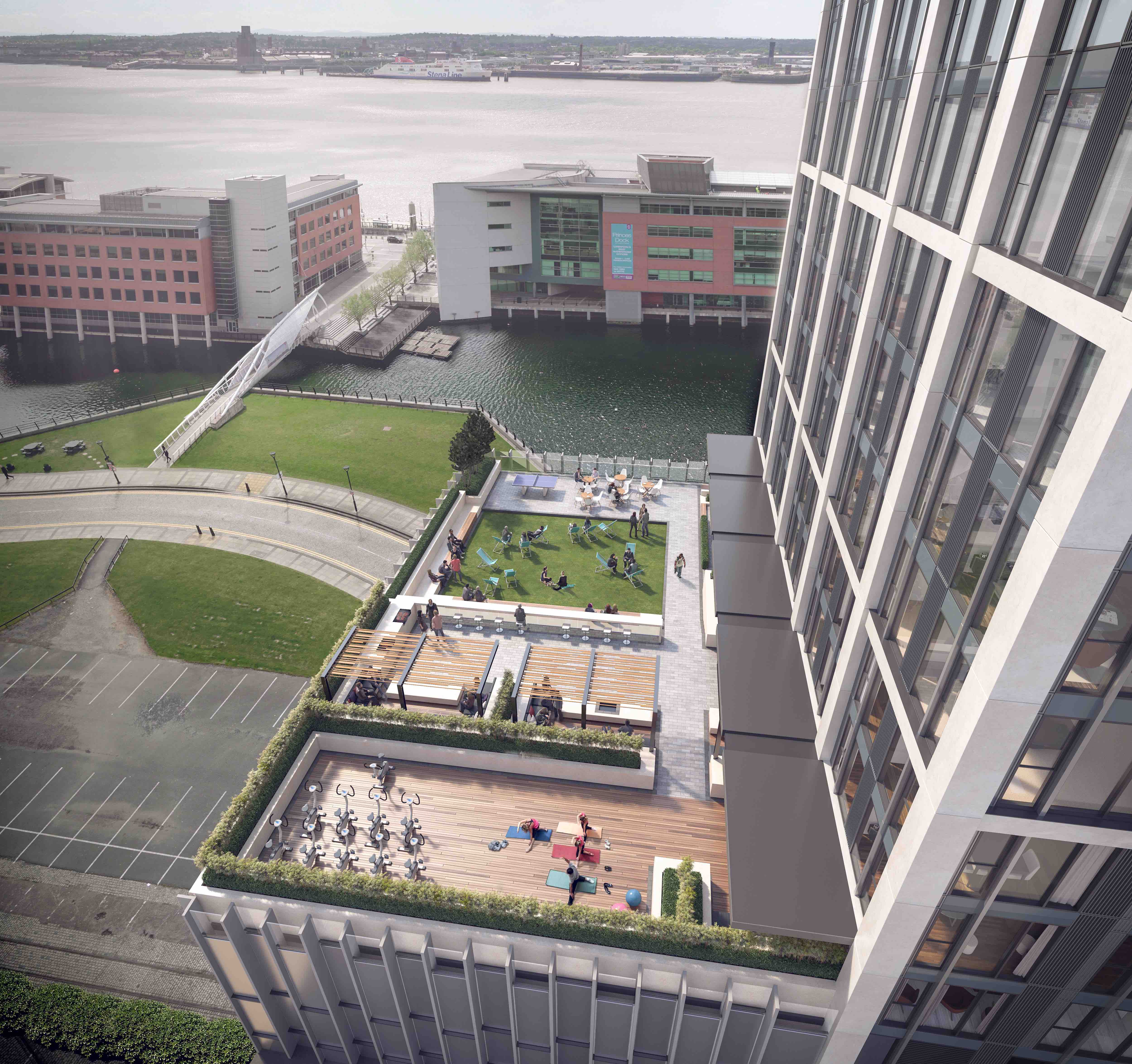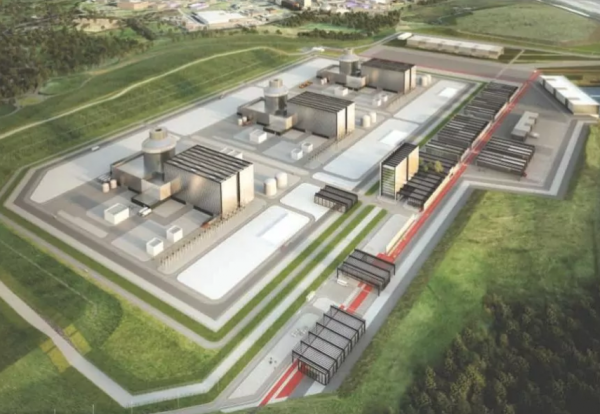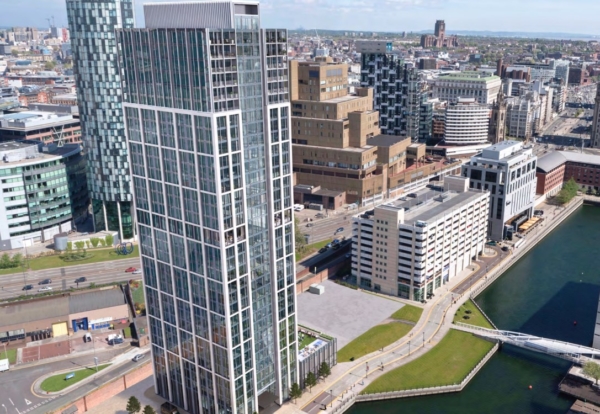Crawler Cranes Sales at 3,300 Units in 2018, Greater China Leads with 30% Share
The broader, macro-economic trends are driving demand for crawler cranes. China, and other emerging Asia Pacific regions are likely to present lucrative opportunities to manufacturers. Posted via Industry Today. Follow us on Twitter @IndustryToday Continue ReadingToshiba scraps £15bn Moorside nuclear power station plan
Plans to build Europe’s biggest nuclear power station in West Cumbria have collapsed after Japanese engineering giant Toshiba said it is pulling out of the project.
The £15bn Moorside power station project involved building three reactors at the site near Sellafield using Toshiba company Westinghouse’s AP1000 reactors.
Toshiba’s decision to wind-up its UK nuclear construction operation, Nugen, is a serious set back for Government plans to develop next-generation nuclear power as part of its shift to a low carbon economy.
The Moorside rector in Cumbria was expected to deliver 7% of the UK’s electricity needs from 2025.
A statement from the Japanese engineering giant said: “After considering the additional costs entailed in continuing to operate NuGen, Toshiba recognises that the economically rational decision is to withdraw from the UK nuclear power plant construction project, and has resolved to take steps to wind-up NuGen.”
Korea Electric Power Corporation had been a preferred bidder to take over the nuclear power plant project. But after more than a year of negotiations, a deal could not be secured.
The Moorside site in Cumbria remains a site designated by Government for nuclear new build, it now passes to the Nuclear Decommissioning Authority as the owner of the site and the Government to determine its future.
The scheme had been projected to create between 14,000-21,000 jobs over the lifetime of the project – including peak on-site employment of more than 6,500.
Director of the Civil Engineering Contractors Association (North West) Guy Lawson said: “The decision to wind up NuGen is a potential hammer blow to the nuclear sector in Cumbria, and the local economy.
“The area is home to the UK’s greatest concentration of companies and workers with genuinely world-leading capability in nuclear delivery and operation.
“It is essential that this competitive advantage and the nuclear skills base are maintained, through sustained investment in nuclear new build, harnessing this capability and delivering low carbon energy to power the UK economy.”
General union GMB has called for an urgent rethink and wants the government to build a small modular nuclear reactor at the site.
Justin Bowden, GMB National Secretary, said: “A golden opportunity exists to take control and develop a small modular nuclear reactor in a part of this country which has a groundbreaking nuclear past that can be repeated in the future.
“The lessons from the collapse of Toshiba should have been well and truly learned long ago – relying on foreign companies and countries for our essential energy needs is utterly irresponsible.”
Are you complying with the Working at Height Regulations 2005? Read the Essential Guidelines
Are you complying with the Working at Height Regulations 2005? Read the Essential Guidelines
Health & Safety Executive (HSE) have stated that working at height is the leading cause of death and serious injury in the construction industry. Did you know that it is responsible for 28% of fatal injuries in working environments? This is due to both the risk of falling, and objects being dropped from above. With this in mind, it is essential for any person employed in construction to have a thorough understanding of the Working at Height Regulations 2005.
What are the Work at Height Regulations?
These regulations set out a list of rules that should be followed in order to avoid injury. The rules are mandatory for employers or those in charge of working at height, and can be enforced by law. Whether there is a risk of falling from a ladder, from the edge of a structure, or through an opening at ground level, the rules always apply.
How do you comply with the Regulations?
A basic understanding of hierarchy within the regulations is a good place to start. Here’s the hierarchy of control measures explained:
- Firstly, you should try to avoid any work at height if at all possible. This could be achieved by using extended tools rather than ladders, or by lowering items to ground level before carrying out repairs.
- When working at height is unavoidable, you are required to do everything possible to eliminate the risks to employees. This could involve working from a balcony, or providing machinery with guards/rails (e.g. PASMA Mobile Access Tower)
- When risks cannot be avoided, you will need to minimise the distance and consequences of a fall. In order to do this you would need to research options such as netting, airbags, harnesses and Personal Protective Equipment.
What should I do next?
- Undertake a risk assessment
Ensure you have identified any hazards and the employees at risk. Based on this, you will need to put in place suitable precautions. Be aware that you are required to record your findings if you have five or more employees.
- Ensure your staff are competent
Are the staff working at height experienced? Do they have the necessary skills and knowledge to perform the task safely? The level of competence depends upon the complexity of the job. To understand more about this, read the HSE guide to competence.
Some jobs may only require basic training, such as guidance from a senior employee. Technical tasks will require a higher degree of training, such as completing a course on the safe use of ladders/working at height.
Any staff involved in assembling, dismantling, inspecting or moving mobile access towers should complete a PASMA training course, such as the PASMA Tower for Users Course.
- Equip your employees with appropriate safety tools
You are required to provide proper safety equipment for your staff. Each task is different, and you’ll need to make sure that you choose the best option for the job. A guardrail or mobile access tower would be one of the safest measures. However, sometimes this may not be feasible and you would then need to use PPE, such as safety harnesses.
- Regularly inspect and maintain equipment
Once you have the ladders, PPE, guard rails or access towers, you shouldn’t simply assume the risk has been negated. The equipment may move, degrade or break over time. Make sure you have someone trained to inspect the gear and that this is done on a regular basis.
By following the steps above, you’re helping to ensure that you are working within the law and prioritising the safety of employees.
This article was written by The Hireman, a tool hire and safety training company based in London.
Continue ReadingArtificial Lift Systems Market Growth, Opportunities and Development 2023
Artificial Lift Systems Market from Qurate Business Intelligence provides detailed information, in depth analysis and forecast which is developed by team of experts and professionals. Posted via Industry Today. Follow us on Twitter @IndustryToday Continue ReadingChinese contractor starts first Liverpool major project
Chinese builder Beijing Construction & Engineering Group International has started work on a 34-storey build-to-rent project for developer Moda on the Liverpool Waterfront.
The Princes Dock tower, designed by Falconer Chester Hall architects, has been called the Lexington because its echoes New York-style designs.
Until now the Chinese state-owned builder has mainly worked in Manchester but is expanding in Liverpool.
Having entered the UK in 2013, BCEGI is an equity and construction partner on Manchester’s £1bn Airport City and preferred contractor on Middlewood Locks, the £1bn mixed-use development in Salford, which will provide 2,215 homes alongside 900,000 sq. ft. of commercial space and a new hotel.
Bachy Soletanche has started work on the historic waterfront site carrying out piling work.

Once completed in 2021, The Lexington will offer 325 flats for rent, with communal facilities including a 17th-floor residents’ lounge, gym, a roof, terrace, a garden and a cinema.
Tony Brooks, managing director at Moda, said: “With Angel Gardens in Manchester on track to complete next year, we’re delighted to have appointed BCEGI to deliver The Lexington.
“Our ambition is to create a true landmark that will add to the already world-famous Liverpool waterfront. BCEGI has a proven track record of successfully delivering some of the North West’s biggest schemes, and we’re delighted to have them on board.”
Yu Dongwen, lead director at BCEGI, said: “We are extremely proud to be appointed by MODA to deliver The Lexington. It is a flagship development that will significantly contribute to the huge transformation of Liverpool Waters. We are looking forward to building our first project in Liverpool.”
Concrete Admixture Construction Chemicals Market 2018 Global Industry Sales, Supply, Consumption, Demand, Analysis and Forecasts to 2025
Wiseguyreports.Com adds “Concrete Admixture Construction Chemicals Market –Market Demand, Growth, Opportunities, Analysis of Top Key Players and Forecast to 2025” To Its Research Database.Posted via Industry Today. Follow us on Twitter @IndustryToday Continue Reading
From pool hall to Providence with Kawneer
Glazing systems by Kawneer feature on a new Ipswich landmark. Posted via Industry Today. Follow us on Twitter @IndustryToday Continue ReadingFlat Glass Market Major Manufacturers, Trends, Demand, Share Analysis to 2025
Wiseguyreports.Com adds “Flat Glass Market –Market Demand, Growth, Opportunities, Analysis of Top Key Players and Forecast to 2025” To Its Research Database.Posted via Industry Today. Follow us on Twitter @IndustryToday Continue Reading
Approaching Construction With An Environmental Mind
Approaching Construction With An Environmental Mind
Construction is a very environmentally intensive process, and when it’s done without the prerequisite oversight, it can lead to serious damage to the surrounding area. This post will explore the ways in which construction companies can improve their best practices to help the environment – ensuring that whatever development they’re building is in harmony with the surrounding environment.
Order the right materials
There’s substantial leeway when it comes to eco-friendly construction materials – you don’t necessarily have to opt for concrete or steel, as there are numerous eco-friendly options out there. Bamboo can be used to build eye-catching structures suitable for warmer climes while blending sawdust and concrete together can create ‘Timbercrete’ – a much more sustainable option utilising a renewable resource.
Very few materials can match up to steel’s suitability for high-rise construction, so, if your project requires strong metal, you should opt for recycled steel – which is becoming increasingly prevalent in modern construction, especially in the form of used shipping containers.
Treat your surroundings with care
An environmental construction process requires special attention to be paid to the surrounding flora and fauna – especially if your project is situated in an area of natural beauty. Buildings in national parks, for example, have to adhere to a set of regulations to make sure they don’t detract from the beauty of the area.
You can reflect this in the construction process by minimising noise and traffic that might disturb the local wildlife, and by avoiding felling trees and vegetation clearance at all costs. This will lead to a finished product that looks like a natural addition to the area, rather than a scar on the landscape.
Incorporate natural elements
One of the major construction trends of this century involves the incorporation of natural flora into the architecture of the building. Major modern landmarks such as the Scottish Parliament Building in Edinburgh include grass roofs to help insulation in winter, as well as promote an eco-friendly ethos. Such a roof is very easy to fit and requires very little maintenance once put in place.
You can also use your building’s ‘transterior’ spaces – such as courtyards, indoor/outdoor foyers and outdoor seating areas to incorporate some plant life to help the project feel at least a little more eco-friendly. A leafy-bordered building will soften the edges, allowing for an accentuated feeling of environmental harmony.
Consider alternative methods
Last but by no means least, approaching construction with an environmental mind should also cover construction techniques themselves. An emerging option amongst new builds is modular construction, in which pre-built modules, assembled offsite, are transported to the site and added to the building.
This method drastically reduces water and electricity usage on site, as well as producing a noticeable reduction in traffic, as fewer truckloads of raw materials will be needed onsite. If you’re building in a quiet residential area or in a national park, this method should be considered to reduce the overall impact of your construction project.

A sensible blend of these environmental best practices will lead to your building project gaining a more harmonious relationship with its surrounds and the environment as a whole. As the world leans further towards more eco-friendly practices, it’s well worth putting some of these strategies into action.



